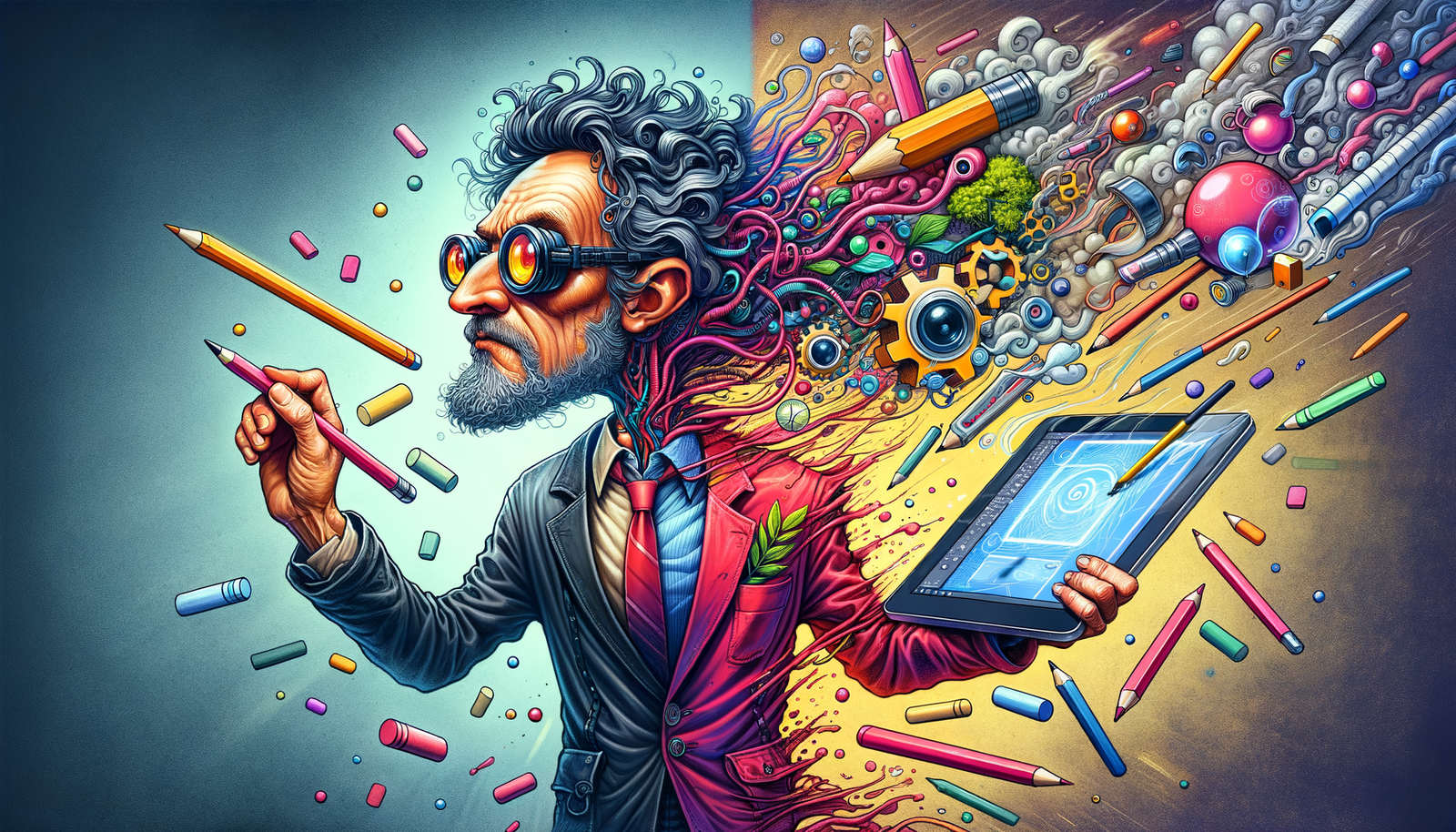Your Cart is Empty
Customer Testimonials
-
"Great customer service. The folks at Novedge were super helpful in navigating a somewhat complicated order including software upgrades and serial numbers in various stages of inactivity. They were friendly and helpful throughout the process.."
Ruben Ruckmark
"Quick & very helpful. We have been using Novedge for years and are very happy with their quick service when we need to make a purchase and excellent support resolving any issues."
Will Woodson
"Scott is the best. He reminds me about subscriptions dates, guides me in the correct direction for updates. He always responds promptly to me. He is literally the reason I continue to work with Novedge and will do so in the future."
Edward Mchugh
"Calvin Lok is “the man”. After my purchase of Sketchup 2021, he called me and provided step-by-step instructions to ease me through difficulties I was having with the setup of my new software."
Mike Borzage
Design Software History: The Revolutionary Impact of Sketchpad on Design Software and Human-Computer Interaction
December 30, 2024 8 min read


The Genesis of Sketchpad and Its Influential Concept
The early 1960s marked a revolutionary period in the history of computer graphics and design software, primarily due to the groundbreaking work of Ivan Sutherland at the Massachusetts Institute of Technology (MIT). In 1963, Sutherland introduced Sketchpad, a pioneering program that would lay the foundational concepts for modern computer-aided design (CAD) systems. Sketchpad was developed as part of Sutherland's Ph.D. thesis and is often heralded as the first program to utilize a graphical user interface (GUI). The introduction of Sketchpad demonstrated the immense potential of interactive computing and graphical manipulation, setting a precedent for future innovations in design software and interactive technologies.
One of the most remarkable aspects of Sketchpad was its pioneering graphical user interface, which allowed users to interact directly with graphical elements on the computer screen. This was a significant departure from the text-based interfaces that dominated computing at the time. By enabling users to draw and manipulate objects visually, Sketchpad opened up new possibilities for how humans could communicate with computers. The system utilized the TX-2 computer at MIT's Lincoln Laboratory, which was equipped with a light pen—a device that allowed users to input data directly by pointing at the display screen. This method of interaction was revolutionary and provided a more intuitive way for users to engage with digital content, laying the groundwork for future developments in GUIs.
Key Features and Innovations
Sketchpad introduced several key features and innovations that were far ahead of its time. One of the most notable was the use of a light pen for direct interaction with the computer screen. This allowed users to draw lines and shapes directly onto the display, facilitating a more natural and intuitive design process. The light pen served as an early precursor to modern input devices like the stylus and touchscreens, highlighting Sketchpad's influence on future technological developments.
Another groundbreaking aspect of Sketchpad was its introduction of concepts related to Object-Oriented Programming (OOP). While OOP would not be formally defined until later, Sketchpad incorporated principles such as the ability to create and manipulate individual objects, inheritance, and the use of instances and master drawings. Users could create duplicable objects, modify them, and apply constraints that governed their behavior and relationships to other objects. This constraints-based editing allowed for a high degree of precision and control in the design process, enabling complex structures to be built from simpler components. These innovations were instrumental in advancing software development practices and influenced the way programmers approached the creation of modular and reusable code.
Initial Reception and Academic Influence
Upon its introduction, Sketchpad was met with considerable interest and enthusiasm within academic and research circles. The program was a significant departure from the conventional computing practices of the time, showcasing the potential of computers beyond numerical calculations and data processing. Researchers and academics recognized the value of interactive graphics, and Sketchpad became a catalyst for further exploration into computer graphics and human-computer interaction.
The influence of Sketchpad on early computer graphics research was profound. It served as a foundation for subsequent studies in graphical input and output devices, user interface design, and the development of more sophisticated graphic systems. The concepts introduced by Sketchpad inspired a generation of computer scientists and engineers to explore the possibilities of visual computing, leading to advancements in rendering techniques, animation, and visualization tools. The academic community embraced these ideas, incorporating them into curricula and research projects that would eventually spread to industry applications.
Sketchpad's Pioneering Role in CAD and Beyond
The impact of Sketchpad extended beyond academic curiosity, profoundly influencing the development of Computer-Aided Design (CAD) systems. Prior to Sketchpad, design and drafting were manual processes that required significant time and effort. Sketchpad demonstrated how computers could assist in design tasks, automating repetitive actions and allowing for greater precision and flexibility. This shift from manual drafting to computer-assisted design revolutionized industries such as engineering, architecture, and manufacturing.
Sketchpad's methodologies and concepts directly influenced the creation of initial CAD systems like AutoCAD and CATIA. These systems adopted features such as interactive drawing, object manipulation, and the use of constraints to define geometric relationships. By building on the foundation laid by Sketchpad, these CAD systems transformed industrial processes, improving efficiency and enabling the design of more complex products. The ability to visualize and modify designs in a digital environment accelerated product development cycles and reduced costs, underscoring the significance of Sketchpad's contributions.
Influence on Graphical User Interfaces (GUIs)
Beyond the realm of design software, Sketchpad had a significant impact on the evolution of Graphical User Interfaces (GUIs). The program set a precedent for user interfaces in design and graphical software by showcasing how users could interact with digital objects directly and intuitively. This concept of direct manipulation became a cornerstone of GUI design, influencing the development of windowed interfaces, icons, and point-and-click interactions that are ubiquitous in modern computing.
Sketchpad's tangible influence on future GUI standards is evident in operating systems and software applications that prioritize user-friendly interfaces. The principles of visual feedback, interactive control elements, and graphical representations of data introduced by Sketchpad have been integrated into countless software products. This has made technology more accessible to a broader audience, enabling users without specialized training to effectively interact with complex systems. Sketchpad's legacy in GUI design highlights the program's far-reaching impact beyond its original scope.
Sutherland’s Legacy and Contribution to Computer Science
Ivan Sutherland's work on Sketchpad solidified his position as a pioneer in computer science and interactive computing. The techniques and ideas distributed from Sketchpad have become fundamental components of modern computing practices. Sutherland's emphasis on interaction, visualization, and the human element in computing paved the way for user-centered design philosophies.
His continued impact on the evolution of interactive computing is reflected in his subsequent contributions, including work on virtual reality and three-dimensional graphics. Sutherland co-founded Evans & Sutherland, a company that specialized in computer graphics hardware and simulation, further advancing the field. His mentorship of other prominent figures in computer science also helped disseminate the innovative ideas introduced in Sketchpad. Sutherland's legacy is not only in the technologies he developed but also in the paradigm shift he initiated towards more interactive and intuitive computing experiences.
Technological Evolution Inspired by Sketchpad
The innovations introduced by Sketchpad spurred significant progress in the application of Object-Oriented Programming (OOP) within design software. The concepts of modularity, inheritance, and encapsulation demonstrated in Sketchpad became integral to the development of complex software systems. In CAD/CAM applications, OOP facilitated the creation of more robust and maintainable codebases, allowing for the development of features that could be easily extended and modified.
The adoption of reusability and modular design across software solutions can be traced back to the principles showcased in Sketchpad. By treating graphical elements as objects with properties and behaviors, developers were able to create more dynamic and flexible applications. This approach has been critical in managing the complexity of modern software, enabling teams to build upon existing components and reduce redundancy.
Constraints and Parametric Design Advancements
Sketchpad's use of constraints-based editing had a profound impact on the development of parametric and constraints-based modeling tools. These tools allow designers to define relationships between elements, ensuring that changes to one aspect of a design automatically update related components. This approach enhances efficiency and accuracy, particularly in engineering and architectural applications where precision is paramount.
Modern software examples influenced by Sketchpad’s concepts include SOLIDWORKS and Autodesk Inventor, both of which utilize parametric modeling to enable sophisticated design capabilities. These programs allow users to create complex assemblies that react intelligently to modifications, streamlining the design process. The ability to simulate and manipulate designs with embedded constraints has become a standard expectation in professional design software, underscoring the lasting influence of Sketchpad's innovations.
Simulation and 3D Modeling Evolution
The transition from two-dimensional representations to comprehensive simulation environments has been a significant evolution in design software, inspired in part by the foundations laid by Sketchpad. The program's emphasis on interactive manipulation of graphical objects set the stage for the development of three-dimensional modeling tools that allow for more realistic and detailed representations of designs.
The influence on the development of simulation-driven and model-based design is evident in software that integrates physics engines, finite element analysis, and real-time rendering. These advancements enable designers and engineers to test and validate their models within virtual environments, reducing the need for physical prototypes. The progression towards immersive and accurate simulations can be traced back to the interactive principles demonstrated by Sketchpad, highlighting its role in shaping modern design methodologies.
The Lasting Legacy of Sketchpad in Modern Software
Sketchpad's continued influence is evident in emerging technologies such as virtual reality (VR) and augmented reality (AR). The concepts of direct manipulation and spatial interfaces that were revolutionary at the time of Sketchpad's creation are now central to VR and AR experiences. These technologies rely on intuitive interactions and immersive environments to enhance user engagement and open new possibilities in design, education, and entertainment.
The connection to VR and AR developments underscores how the ideas introduced by Sketchpad are resurging today. As technology advances, the importance of natural and intuitive interfaces becomes increasingly apparent. The resurgence of these concepts highlights the timeless nature of Sutherland's innovations and their adaptability to evolving technological landscapes.
Role in Educational Development in Computer Science and Design
Sketchpad holds a significant place in the pedagogy of computer graphics and user interface design. Its introduction into educational curricula has provided students with historical context and foundational knowledge of interactive computing. By studying Sketchpad, students gain insight into the principles that underpin modern software and interface design, fostering a deeper understanding of how current technologies have evolved.
Continued studies and projects inspired by Sutherland’s work are prevalent in academic institutions. Research initiatives often explore new applications of interactive graphics, human-computer interaction, and visualization techniques, building upon the groundwork laid by Sketchpad. This ongoing engagement with the concepts introduced by Sketchpad ensures that its influence persists in shaping the minds of future innovators in computer science and design.
Future Directions Inspired by Sketchpad
Modern CAD and design software continue to evolve by incorporating early principles introduced by Sketchpad. The focus on user-centered design, interactive interfaces, and modular architecture remains central to the development of new tools and applications. As technology progresses, there is a constant pursuit of more efficient, intuitive, and powerful design methodologies that align with the foundational concepts of direct manipulation and object-oriented interaction.
Prospects for interactive design methodologies in upcoming innovations are promising. With advancements in artificial intelligence, machine learning, and immersive technologies, the possibilities for enhancing design software are expanding. The integration of generative design, collaborative virtual environments, and intelligent assistance are areas where Sketchpad's influence can be seen. Understanding and applying the core principles from Sketchpad allows developers to continue pushing the boundaries of what design software can achieve.
Conclusion
In summarizing Sketchpad’s revolutionary contributions, it is clear that the program has had a lasting impact on both technology and methodology in design software. Sketchpad served as a cornerstone of modern digital design processes, introducing concepts that have become integral to how we interact with computers and create digital content. Its influence spans from the development of CAD systems to the evolution of graphical user interfaces, and from educational frameworks to emerging technologies like VR and AR.
Reflecting on the interplay between history and future innovations, understanding historical breakthroughs like Sketchpad is essential in guiding future advancements in design technology. The role of foundational technologies in shaping future technological landscapes cannot be overstated. By building upon the principles and innovations of the past, developers and researchers can continue to drive innovation, creating tools and systems that enhance efficiency, accessibility, and creativity in the digital age.
Also in Design News

Cinema 4D Tip: Constraint-Based Animation with PSR, Parent, and Aim
December 07, 2025 2 min read
Read More
V-Ray Tip: Proximity Dirt and Wear Masks with VRayDistanceTex
December 07, 2025 2 min read
Read More
AutoCAD Tip: Isolate Objects for Focused, Non-Destructive Editing
December 07, 2025 2 min read
Read MoreSubscribe
Sign up to get the latest on sales, new releases and more …


